A
Auto Express
Guest
The Hyundai i20 is a strong contender in the supermini class thanks to its spacious interior, sharp looks and well equipped spec levels. While it can't quite match the VW Polo for all-round ability, and a Ford Fiesta will run rings around it for fun handling, it delivers a comfortable ride and decent kit for the money.
Where the i20 trips up is with its running costs, especially if you go for one of the naturally aspirated engines. Claimed fuel economy isn't as good as similarly priced rivals, while higher emissions make it less attractive to company car users, too.
If fuel economy isn't your priority, then the i20 is still worth checking out, and all models are fairly generously equipped. Big-car kit such as sat-nav, climate control and heated seats are all fitted in top spec cars, while Hyundai's five-year, unlimited mileage warranty is an attractive proposition for potential buyers.
In the closely fought supermini class, the Hyundai i20 is an alternative choice for buyers looking for a reliable, well equipped and spacious car for their money. While the first generation established the company in the supermini class - its predecessor, the Hyundai Getz, was on the small side to be a front-runner - the second generation introduced in 2014 set new standards for quality and space for the Korean maker's supermini.
The i20 Mk2 uses an all-new platform which has since been seen on the new Kia Rio, and it translates into a more spacious interior and boot than ever. Updates in 2018 brought minor styling revisions, including the latest iteration of Hyundai’s ‘cascading’ grille at the front, and at the back the number plate moves from its previous place on the bumper up to the boot lid. A couple of new colours were offered, new wheel designs, and the option of a contrasting roof.
Hyundai offers four basic trims - S Connect, SE, Premium Nav and Premium SE Nav, along with the Play special edition. These models are all offered in five-door hatchback guise.
Whichever trim you choose, you won't get much in the way of options. The only real upgrade is metallic paint, and if you want extras, you have to move up to the next trim level. That does mean the top-spec Premium SE Nav is very well equipped, though, with heated seats, mirrors and steering wheel, 16-inch wheels, lane departure warning, full parking sensors, sunroof and privacy glass all included.
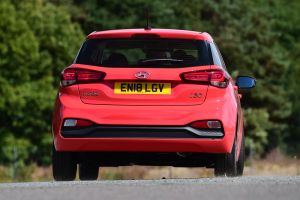
Hyundai i20 - rear cornering
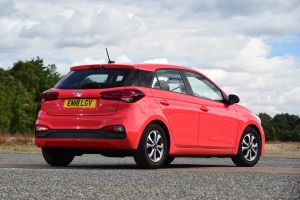
Hyundai i20 - rear static
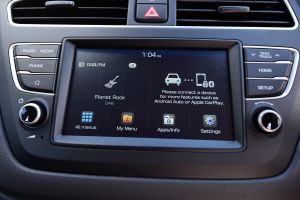
Hyundai i20 - infotainment
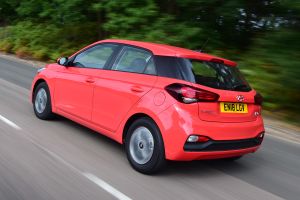
Hyundai i20 - rear
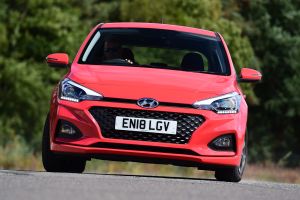
Hyundai i20 - front cornering
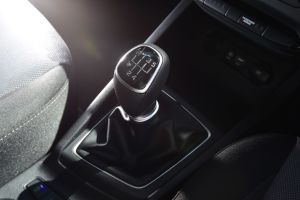
Hyundai i20 - transmission
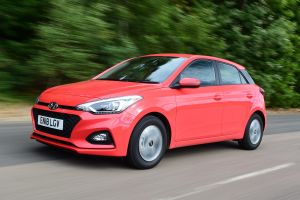
Hyundai i20 - front
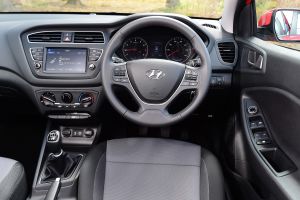
Hyundai i20 - dash
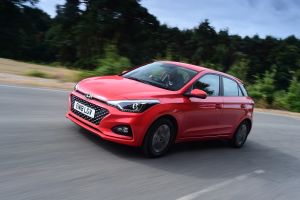
Hyundai i20 - front action
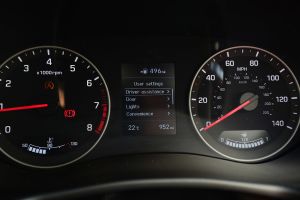
Hyundai i20 - dials
There are four engines available, all of which are petrol - Hyundai dropped the old diesels from the lineup in mid-2017. Petrol units include a 1.2-litre unit with a choice of 74bhp or 83bhp, and the 1.0 T-GDi turbo three-cylinder which comes in 99bhp and 118bhp guises. A new automatic gearbox joined the range for the 2018 updates: the seven-speed dual clutch transmission is available with the lower-powered of the two 1.0-litre models.
The most accomplished rivals that the Hyundai i20 face are the Volkswagen Polo and the Ford Fiesta. The Vauxhall Corsa, Toyota Yaris and Mazda 2 are all rivals that offer something different, while the Kia Rio uses similar running gear to the i20. Other cars to consider include the new Citroen C3, Renault Clio, Peugeot 208, Skoda Fabia, SEAT Ibiza and Nissan Micra.
For an alternative review of the latest Hyundai i20 Hatchback visit our sister site carbuyer.co.uk
Continue reading...
Where the i20 trips up is with its running costs, especially if you go for one of the naturally aspirated engines. Claimed fuel economy isn't as good as similarly priced rivals, while higher emissions make it less attractive to company car users, too.
If fuel economy isn't your priority, then the i20 is still worth checking out, and all models are fairly generously equipped. Big-car kit such as sat-nav, climate control and heated seats are all fitted in top spec cars, while Hyundai's five-year, unlimited mileage warranty is an attractive proposition for potential buyers.
In the closely fought supermini class, the Hyundai i20 is an alternative choice for buyers looking for a reliable, well equipped and spacious car for their money. While the first generation established the company in the supermini class - its predecessor, the Hyundai Getz, was on the small side to be a front-runner - the second generation introduced in 2014 set new standards for quality and space for the Korean maker's supermini.
The i20 Mk2 uses an all-new platform which has since been seen on the new Kia Rio, and it translates into a more spacious interior and boot than ever. Updates in 2018 brought minor styling revisions, including the latest iteration of Hyundai’s ‘cascading’ grille at the front, and at the back the number plate moves from its previous place on the bumper up to the boot lid. A couple of new colours were offered, new wheel designs, and the option of a contrasting roof.
Hyundai offers four basic trims - S Connect, SE, Premium Nav and Premium SE Nav, along with the Play special edition. These models are all offered in five-door hatchback guise.
Whichever trim you choose, you won't get much in the way of options. The only real upgrade is metallic paint, and if you want extras, you have to move up to the next trim level. That does mean the top-spec Premium SE Nav is very well equipped, though, with heated seats, mirrors and steering wheel, 16-inch wheels, lane departure warning, full parking sensors, sunroof and privacy glass all included.

Hyundai i20 - rear cornering

Hyundai i20 - rear static

Hyundai i20 - infotainment

Hyundai i20 - rear

Hyundai i20 - front cornering

Hyundai i20 - transmission

Hyundai i20 - front

Hyundai i20 - dash

Hyundai i20 - front action

Hyundai i20 - dials
There are four engines available, all of which are petrol - Hyundai dropped the old diesels from the lineup in mid-2017. Petrol units include a 1.2-litre unit with a choice of 74bhp or 83bhp, and the 1.0 T-GDi turbo three-cylinder which comes in 99bhp and 118bhp guises. A new automatic gearbox joined the range for the 2018 updates: the seven-speed dual clutch transmission is available with the lower-powered of the two 1.0-litre models.
The most accomplished rivals that the Hyundai i20 face are the Volkswagen Polo and the Ford Fiesta. The Vauxhall Corsa, Toyota Yaris and Mazda 2 are all rivals that offer something different, while the Kia Rio uses similar running gear to the i20. Other cars to consider include the new Citroen C3, Renault Clio, Peugeot 208, Skoda Fabia, SEAT Ibiza and Nissan Micra.
For an alternative review of the latest Hyundai i20 Hatchback visit our sister site carbuyer.co.uk
Continue reading...
